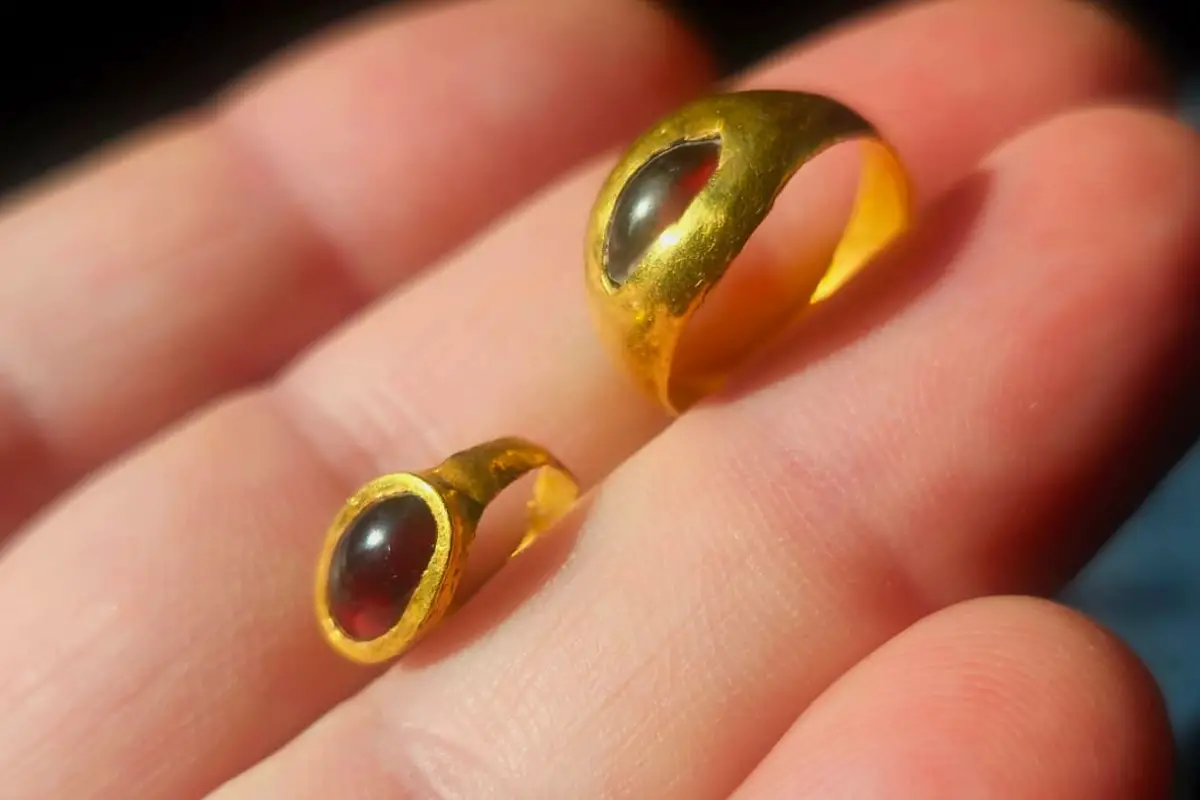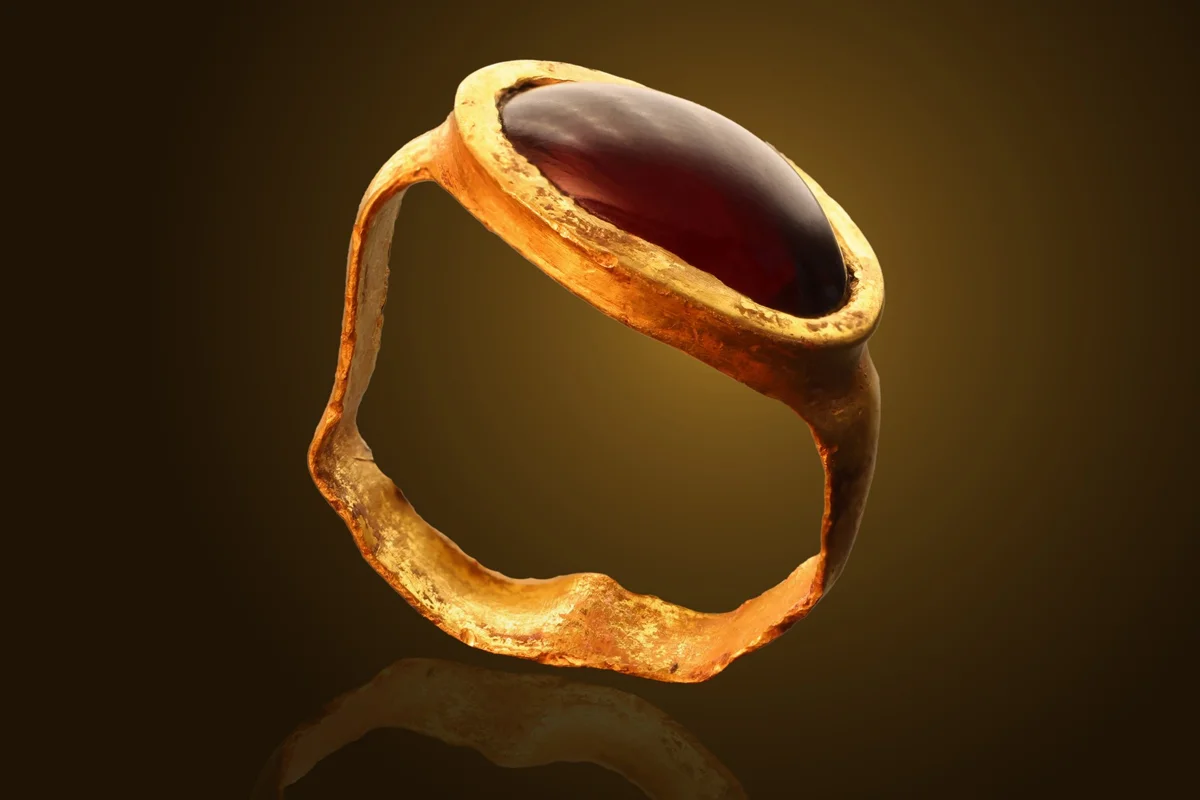Archaeologists have discovered a gold ring set with a polished red garnet during excavations of an ancient residential structure in the Jerusalem Walls National Park.
According to a press statement issued by the Israel Antiquities Authority (IAA), the ring likely belonged to a child or adolescent and dates to over 2,300-years-ago during the Second Temple period
The discovery follows on from a similar ring found at the same site just a few months ago which was also crafted from gold and set with a red garnet.
Dr. Yiftah Shalev from the IAA explained that both rings came from the foundations of a large building dated to the 3rd to 2nd century BC. Within the same context layer, archaeologists also found several gold earrings, including an earring with gold beads decorated with the image of a horned animal.

According to Dr. Marion Zindel who conducted a study on the rings: “The discovery of both small rings and other pieces of jewellery beneath the building’s floors suggests they may have been deliberately placed there. One theory currently being explored is that this reflects a known Hellenistic-era tradition, in which young women, often on the verge of marriage would place jewellery and childhood items in the foundations of a new home as a symbolic gesture marking their transition from childhood to adulthood.”
Excavation manager Efrat Bocher noted, “This is the first time such a significant collection of Hellenistic gold jewellery has been found in Jerusalem. It’s an extraordinary discovery, revealing the affluence and lifestyle of Jerusalem’s inhabitants during this era.”
Header Image Credit : IAA
Sources : Israel Antiquities Authority





